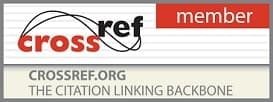2020, Vol. 4 Issue 1, Part B
A prospective study on functional outcome of fracture shaft of femur stabilised with reamed intramedullary nail
Author(s): Dr. Shail D Patel and Dr. Vicky M Pethapara
Abstract: Background: The incidence of femoral shaft fractures is on raise because of fast and high speed transportation and modern lifestyles. Internal fixation is the mainstay of treatment. Conventional plating is associated with high risk of infection, pseudoarthrosis, malunion, decreased knee motion and loss of fixation. Interlocking techniques lead to fewer complications of nonunion/malunion, lesser soft tissue dissection, earlier fracture healing and lesser chances of infection. Fractures in any zone from the subtrochanteric to distal supracondylar part of the femur are accessible to nailing. This study conducted to analyse the results of fractures of femur treated by interlocking nail AO type.
Methods: This was a prospective study of patients who underwent reamed intramedullary nailing for the fracture shaft of the femur. Postoperatively all patients were initiated on the rehabilitation protocol based on the fracture pattern. All patients were operated by the same surgeon and patients were followed up to six months period at regular intervals. Functional outcome is assessed by Thoresen’s criteria and lower extremity functional scoring system, radiological with fracture healing.
Results: In our series of 78 cases of femoral shaft fractures treated by interlocking nail 57 patients had good outcome, 12 patients had moderate outcome, 5 had fair and 4 patients had poor outcome. Most of the patients in this series were younger age group; more than 80% were below 50 years.
Conclusions: We confirm that the functional outcome after fracture shaft of femur stabilised by reamed intramedullary nail is good to moderate. Intramedullary nailing is effective treatment for the stabilisation of the fracture shaft of femur in view of subjective and objective perspective. From this sample study we concluded the femur interlocking nail is a good implant for the treatment of femoral shaft fractures because of its load sharing, close insertion, rotational stability, restoration of anatomic length alignment and early mobilization.
Pages: 95-99 | 1423 Views 84 Downloads
How to cite this article:
Dr. Shail D Patel, Dr. Vicky M Pethapara. A prospective study on functional outcome of fracture shaft of femur stabilised with reamed intramedullary nail. Nat J Clin Orthop 2020;4(1):95-99 DOI: https://doi.org/10.33545/orthor.2020.v4.i1b.206






